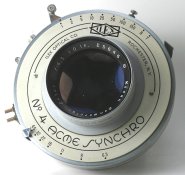- Joined
- Dec 13, 2006
- Messages
- 17
- Format
- Large Format
How long should be a bellow on a 20x24 camera if I want to take portrait in a studio ?
I know that it depend on the lens I will use and that I should have a bellow that is twice longer than the lens, so that I can use the 1:1 ratio...
but what would you consider a good lens to make portrait on this kind of camera ?
In fact at the biginning I will only use 16x20 sheet film in vertical position inside the 20x24 film holder that would be in horizontal position...
Sorry if my english is not so good, I hope my questions are clear ?
Thank you, T. Moenne-Loccoz.
I know that it depend on the lens I will use and that I should have a bellow that is twice longer than the lens, so that I can use the 1:1 ratio...
but what would you consider a good lens to make portrait on this kind of camera ?
In fact at the biginning I will only use 16x20 sheet film in vertical position inside the 20x24 film holder that would be in horizontal position...
Sorry if my english is not so good, I hope my questions are clear ?
Thank you, T. Moenne-Loccoz.




